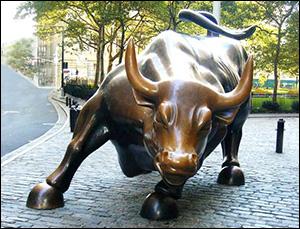Courtesy of Pam Martens
Some of the same warning signs that emerged before the 1929 to 1933 market crash, the tech mania crash of 2000, and the epic Wall Street meltdown of 2008 are flashing red.
If you have significant amounts of your 401(k) invested in equity mutual funds (that is, those invested in stocks), it’s time to take an objective appraisal of today’s market versus historic benchmarks.
This is also a good time to remember that markets have lost as much as 50 percent of their value from peak to trough in the last 20 years. If that’s more pain than you’re prepared to suffer, it may be time to trim back your exposure.
We’ll get to the specifics on today’s market shortly, but first some necessary background.
In the market crash of 1929 to 1933, the stock market lost 90 percent of its value. It did not return to the level of 1929 until 1954 – a quarter of a century later.
There is some basis to speculate that the bear market of October 2007 to March 2009, which included the epic Wall Street crash of 2008, would have produced far more serious pain than the 50 percent retracement in the S&P 500 that did occur – perhaps pain on the level of 1929 to 1933 – had it not been for the secret $16 trillion in almost zero-interest loans that the Federal Reserve Bank of New York sluiced into the major brokerage firms on Wall Street — which was on top of the hundreds of billions of dollars in bailout funds that were authorized by Congress.
In a March 3, 2015 Senate Banking Committee hearing, Senator Elizabeth Warren had this to say about the secret loans made by the Fed:
“Now, let’s be clear, those Fed loans were a bailout too. Nearly all the money went to too-big-to-fail institutions. For example, in one emergency lending program, the Fed put out $9 trillion and over two-thirds of the money went to just three institutions: Citigroup, Morgan Stanley and Merrill Lynch.
“Those loans were made available at rock bottom interest rates – in many cases under 1 percent. And the loans could be continuously rolled over so they were effectively available for an average of about two years.”
You can read the Government Accountability Office (GAO) report on the matter here.
There has been far too little Congressional and media interest in why the Fed would pump $9 trillion of its $16 trillion in loans to just three Wall Street institutions. Those three institutions had one thing in common – they held massive amounts of margined trading accounts.




